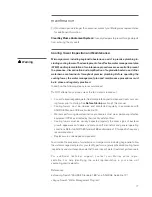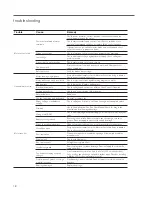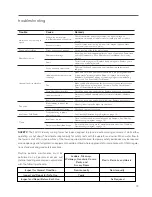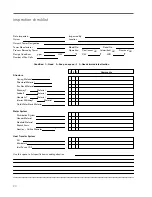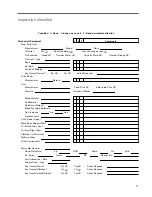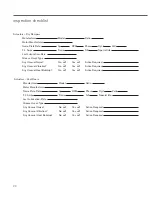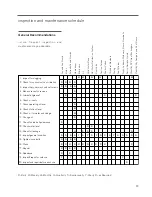
15
Potential Causes of Fill Clogging:
• Suspended materials—Debris, etc.
• Scale—Can be sulfates, silicates, carbonates, or oxides. Scaling effects can be ac-
centuated by suspended solids.
• Algae and/or Biofilm—Consult a qualified water treatment professional.
Possible Sources of Scale:
• Calcium Sulfate—From make-up and sulfates produced by sulfuric acid for pH adjust-
ment. Calcium sulfate should be kept below 1000 ppm expressed as CaCO
3
.
• Calcium Carbonate—Generally will not form scale in the cooling tower if carbonate
scaling does not occur in the condenser.
• Exceptions: If make-up water contains surplus free carbon dioxide, scaling may be
inhibited in the condenser, but may occur in the tower fill because of CO
2
stripping.
• Silicates and Oxides—Silica scale is virtually impossible to remove. Silica scale is unlikely
if SiO
2
is held below 150 ppm. Oxides, such as iron oxide, can coat all parts of the
system if soluble iron is present in concentrations above 0.5 ppm. Iron oxides do not
usually develop into thick scales but can accentuate the development of other scales.
MAINTENANCE OF CLEARSKY PVC HEAT EXCHANGERS
Fouling
• Dust may accumulate in the dry air ducts over time causing reduced heat transfer.
Do not use high pressure washing equipment on ClearSky PVC heat exchangers.
• Low pressure washing from a municipal or similar water supply system using a hose
with a spray nozzle on a shower setting is recommended. Do not spray a jet stream
directly on the PVC ClearSky heat exchangers. Spray water at the top of the ClearSky
heat exchangers.
Leaks
• Water should not be allowed to accumulate in the dry air ducts (except when clean-
ing). Evaporation of water in the dry ducts will reduce plume abatement. Furthermore,
in cold climates ice accumulation may cause damage.
• Leaks at casing and or flashing should be resealed.
• Leaks in the PVC heat exchange tubes may be sealed with an adhesive. PVC cement
is not recommended because it may soften the plastic. In the event that the source of
the leak can not be identified, the wet path of that tube should be plugged. A closed
cell flexible foam that can be inserted and removed is recommended.
Caution
maintenance

















